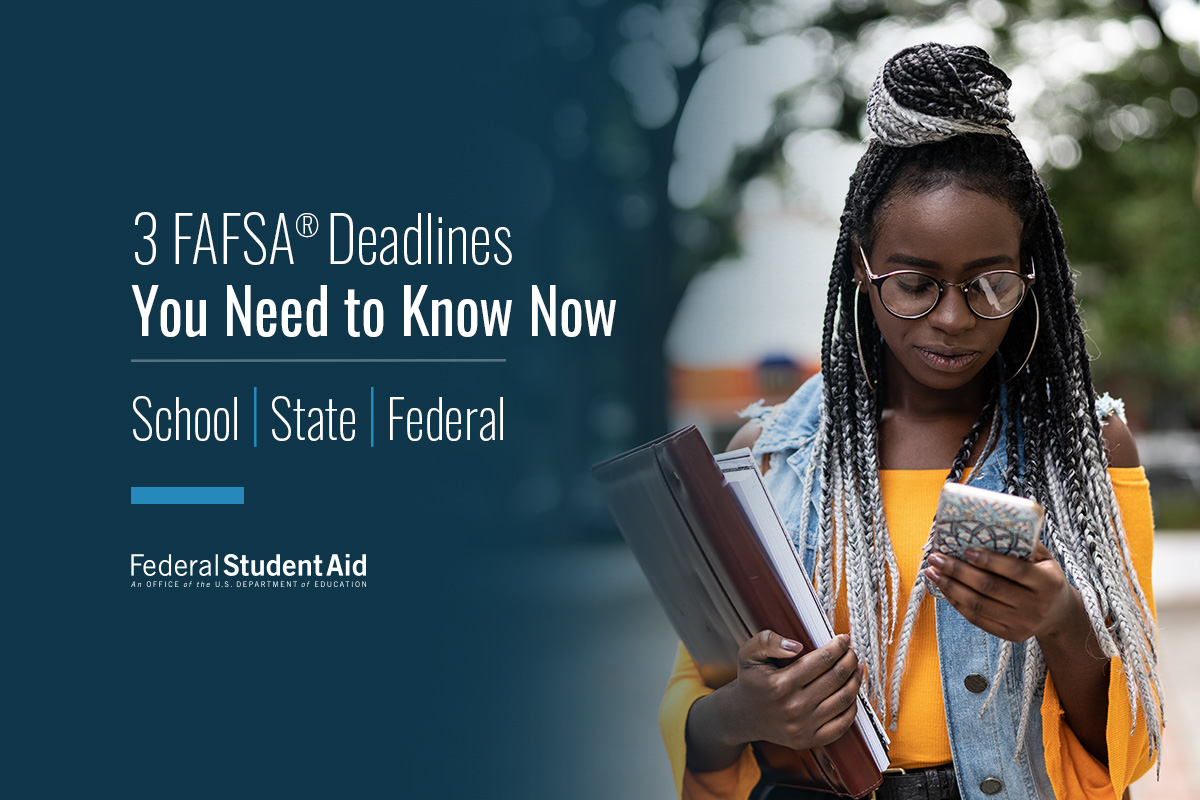
Navigating financial aid is key to making college affordable, but missing deadlines can cost you grants and loans. Staying organized and proactive ensures you secure funding by each school’s priority deadlines. Use this timeline to complete the FAFSA and college forms essential to maximizing aid offers.
January – February: Prepare Your Documents
Complete your taxes as early as possible once the tax year ends. You’ll need both your and your parents’ returns to fill out the FAFSA. Gather other documents required like W-2s, 1099s, and asset records.
Make sure you have your FSA ID to electronically sign the FAFSA. If you are considered independent for financial aid purposes, note proof like tax documents showing you support yourself.
October 1st: Submit the FAFSA
This is the first date you can complete the Free Application for Federal Student Aid (FAFSA) for the upcoming school year. Submit this crucial form right on October 1st or as soon as possible.
Education Department data shows “Students who submit the FAFSA in October or November get twice as much grant aid on average.” Don’t delay!
November – December: Watch for Verification
If selected for verification after submitting the FAFSA, you must provide additional documents to prove the information is accurate. This includes extra tax forms or proof of extenuating circumstances.
Respond promptly to verification requests or your aid could get delayed. Provide all documentation as soon as possible.
December: Research Outside Aid
Look for scholarships from community groups, companies, religious organizations, credit unions, foundations, and other sources. Websites like Fastweb make this easier. Outside scholarships combined with financial aid provide the most affordability.
Ask each school about institutional aid opportunities too. Make a calendar of all scholarship deadlines you qualify for.
January 1st: Submit CSS Profile
The College Scholarship Service (CSS) Profile forms open on January 1st for enrolled students. Many private colleges require this additional form to assess need. Again, complete the Profile as close to January 1st as possible.
Double check which colleges require the CSS Profile and submit it to those institutions at the start of January.
January – February: Submit College Forms
Finish any supplemental financial aid or scholarship applications for each college. Forms may include providing additional tax information beyond the FAFSA or submitting an aid appeal explaining special circumstances impacting your ability to pay.
This is also when colleges typically request verification documents if you are selected for verification. Send every form to colleges promptly. Don’t miss priority aid deadlines!
March: Watch for Aid Award Letters
Colleges must send financial aid award letters to admitted students by March 31st. However, submitting your FAFSA and other forms months earlier means you may receive your offers as early as March 1st.
Review award letters closely comparing grant, scholarship, loan, and work study offers from each college. Call financial aid offices with any questions.
April: Decide on College Choice
By deciding which college to attend in April, you can accept the school’s aid package and decline offers from other colleges you applied to. This opens up funding for other applicants. Inform your intended school of accepting its offer.
Double check you completed all required paperwork so your aid is finalized. Immediately notify colleges you are declining admission to.
Late April: Secure Federal Loans
If offered federal subsidized or unsubsidized loans as part of your award, you must take separate steps to finalize and accept these. Complete required loan counseling and sign your Master Promissory Note (MPN) by the end of April.
Submitting MPNs late means you won’t have access to federal loan disbursements to pay your college bill over the summer. Don’t miss this key deadline!
May: Apply for Private Loans
If costs are not fully covered after other aid, private student loans through banks may be an option. Research options and interest rates thoroughly before deciding to borrow. Many experts suggest limiting private borrowing.
Give yourself time in May to apply and get approved so funds disburse by the initial fall tuition bill due date.
June – August: Update Your School
If your financial situation changes over the summer due to loss of job, illness, etc. immediately contact your intended college’s financial aid office. They may be able to reevaluate your eligibility and increase aid.
Also alert all colleges if you receive any outside scholarships over the summer that weren’t already reported. These impact your aid package.
Following this timeline maximizes your potential for need-based grants and scholarships, ensures you have full funding secured by college start, and lets you make financial choices thoughtfully. Don’t leave free aid on the table by delaying!










